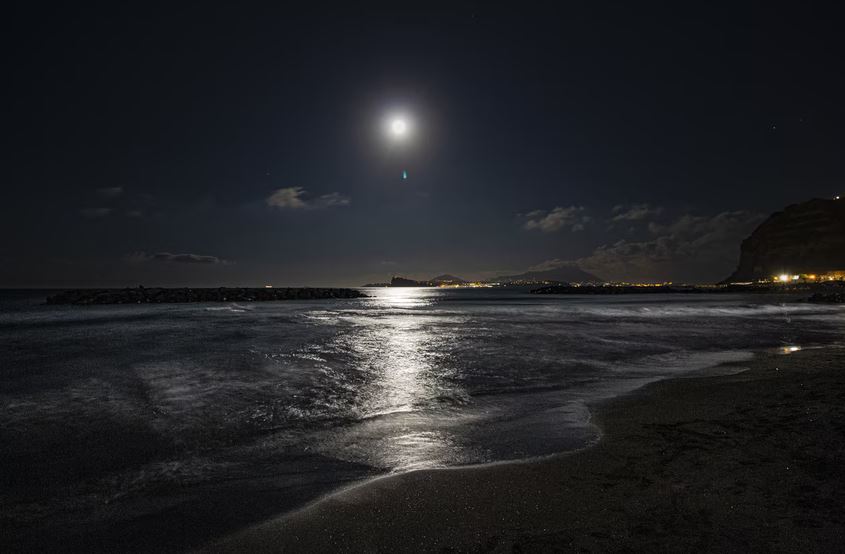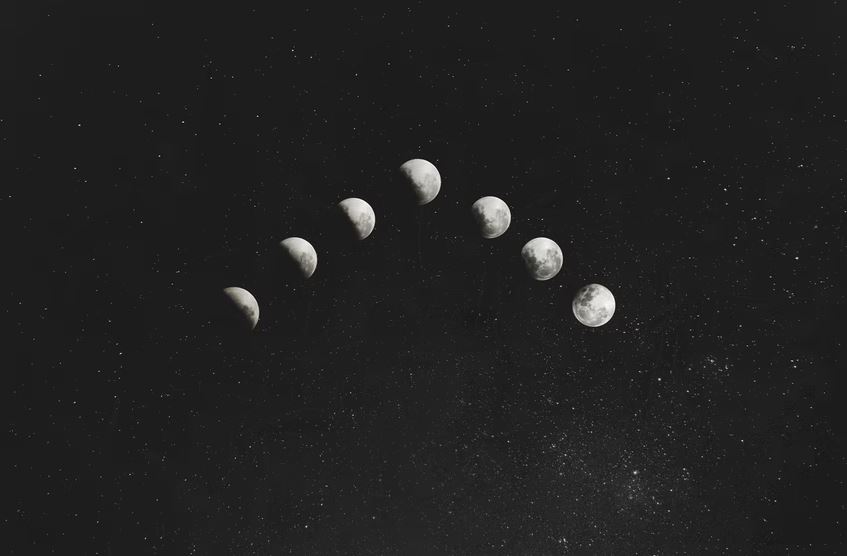It’s common to hear individuals make jokes about the so-called erratic behavior during a full moon, blaming the “Bella Luna” for any action. The name “lunatic” or “lunacy” is derived from Luna, the Roman goddess of the Moon. Moreover, the Moon has been accused of affecting everything from fertility to foraging behavior. Still, it has yet to be shown whether the Moon has that much influence on our behavior. Nevertheless, one thing is certain about this celestial body: it significantly impacts changing ocean tides.
The Moon
The tidal force results from the Earth’s gravity combined with the Moon’s gravitational pull hence, what causes our ocean tides to alter. But how does this process work? What is the mechanism behind this? Well, it all boils back to gravity’s fundamental principles.
Gravity is an invisible force that pushes things towards each other. It is also the reason why you are not floating in space while you’re reading or eating. Anything with mass has gravity, and fortunately for us, the Earth is quite large.
The Moon’s mass is nearly 80 times less than Earth’s, but it still has gravity. This is why the area nearest to the Moon feels the gravitational pull as the Earth rotates. However, if you wonder how we only rotate past the Moon once a day, how come we have two high tides per day? That’s an excellent question!
This is where the tidal force enters the picture. The tidal force is calculated by subtracting the Moon’s gravitational attraction in a specific area from the Moon’s average gravitational pull across the entire Earth. Because water is far less dense than land, the Moon’s gravity affects the Earth as a whole, not just the ocean. With that, we could observe that the tides change while the rest of the Earth is being drawn away from us and towards the Moon. We experience high tide on the other side of the Earth during this time, where the Moon’s gravity is weakest.
The Sun
The Sun is also deemed influential when it comes to the changes in the ocean tides.
If the Sun is aligned with the Moon, it also exerts gravitational force. Afterward, it can act along with the Moon to increase the strength of the tides. When the Sun is not aligned with the Moon, it works against it, lowering the high tide and slightly raising the low tide, resulting in a smaller peak and valley.
Because oceans have varying shapes, depths, and coastlines, the water sloshes around in different ways, causing the Earth’s sea level to rise and fall by different amounts depending on where you are. The Bay of Fundy in Canada, for example, sees a 50-foot difference in sea level from low to high. With each high and low tide, the variation is only a few feet up and down.
Types of Tides
The relative magnitude of the tidal bulge is referred to as spring and neap tides. The Earth experiences two high and low tides throughout the Moon’s rotation around the Earth because there are two areas where the tide bulges and two matching sites where the water is dropped. The form of the coastal basin and its matching landmass determine the exact height of any tide. The high tides are highest during spring tide, while the low tides will be at their lowest. As a result, during a solar eclipse, anyone within ninety degrees of the eclipse path will experience a high tide. In comparison, those who are ninety degrees away will experience a low tide.
Spring Tides
The tidal range is also affected by the Moon phase. Around the New Moon and Full Moon, the difference between high and low tide is the biggest. Because the Earth is aligned with the Sun and Moon, and their gravitational pulls combine to draw the ocean’s water in the same direction during these Moon phases, the solar and lunar tides coincide. Spring tides or king tides are the names given to these types of tides. The name is a synonym for the jump or leap and has nothing to do with the spring season.
The equinoctial spring tide occurs when the Sun is directly above the Earth’s equator on either the March or September equinoxes. The tidal range on these spring tides is frequently even wider.
Neap Tides
Because the gravity forces of the Moon and the Sun oppose each other at these two times of the lunar month, the tidal range is smallest around the Quarter Moons/Half Moons. These tides are known as neap tides or neaps, which comes from the Anglo-Saxon word neap, meaning “without power.” Neaps occur around seven days after spring tides.
Moon Phases and Tides
The complicated interaction of three celestial bodies, the Sun, the Earth, and the Moon, causes ocean tides. With that, the water on Earth is affected by the gravitational pull of both the Sun and the Moon. The Moon’s gravity causes two tidal bulges on opposing sides of the Earth due to this force. Moreover, these tidal bulges will slightly alter as the Moon goes through its phases, depending on the relative position of the Sun.
New Moon and Full Moon
The tides are at their most extreme at the full Moon and the new Moon. The high tides are incredibly high, and the low tides are quite low. It is because the Moon and Sun are all in a straight line on opposite sides of the Earth. During this moment, their combined gravitational forces result in more prominent tidal bulges. Nevertheless, their gravitational forces combine to form huge tidal bulges in this situation. Spring tides are what they’re called when this happens.
Quarter Moons
The Earth’s tides are at their least extreme during quarter moons. The Moon forms a right angle with the Sun when it is in the quarter phase. Each body’s gravitational forces act at perpendicular angles, reducing the overall tidal bulge. There is still a net tidal bulge since the Moon exerts a higher gravitational pull than the Sun. This protrusion, however, is at its smallest. These are referred to as neap tides.
Waning Crescent and Waxing Gibbous
The Moon approaches its full and new phases during the waxing gibbous and fading crescent phases, respectively. As a result, the tidal bulges that result will grow in size until reaching their maximum during the spring tides.
Waxing Crescent and Waning Gibbous
The Moon is already on its way to the quarter phases during the waning gibbous and waxing crescent phases. As a result, the tidal bulge will diminish until it reaches its lowest point at neap tides.



